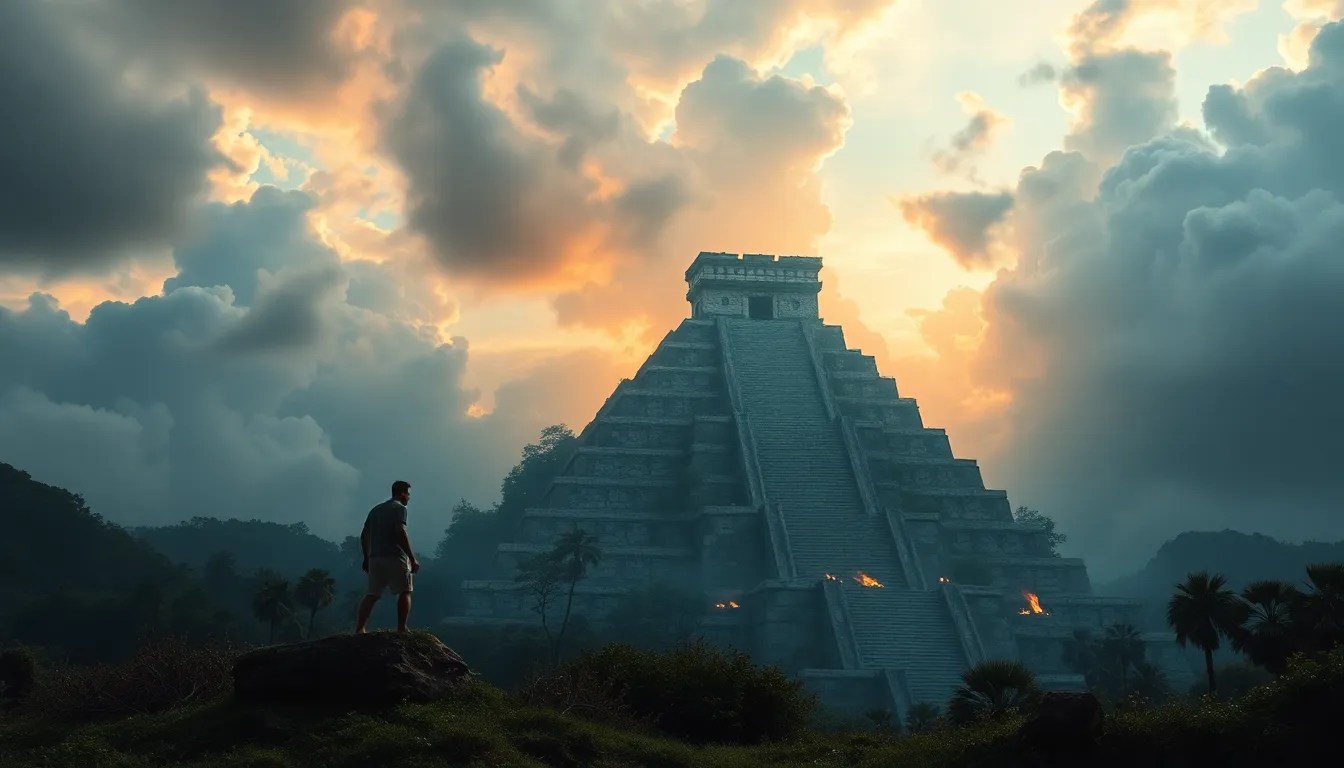The Role of Nature in Mayan Creation Stories
I. Introduction
Mayan mythology is a rich tapestry of stories, deities, and beliefs that reflect the ancient civilization’s understanding of the universe. This mythology is not merely a collection of tales but is deeply intertwined with the Mayan way of life, providing insights into their culture, religion, and worldview. Central to this belief system is the reverence for nature, which plays a critical role in the creation stories of the Mayans.
In this article, we will delve into the significance of nature in Mayan creation myths, exploring how the natural world influenced their cosmology, rituals, and daily life. By examining these creation stories, we can gain a deeper appreciation for the ecological wisdom embedded in Mayan traditions.
II. The Mayan Cosmology: An Interconnected Universe
The Mayan cosmos is structured into three main realms: the underworld, earth, and heavens. These realms are not isolated; instead, they are interconnected, reflecting the Mayans’ holistic understanding of existence.
The sacredness of natural elements is paramount in Mayan cosmology. Each element—earth, water, fire, and air—holds profound significance and is often personified in their mythology.
- Earth: Seen as a mother figure, providing sustenance and shelter.
- Water: A vital life source, representing fertility and renewal.
- Fire: Symbolizing transformation and energy, associated with creation and destruction.
- Air: The breath of life, connecting all living beings.
In Mayan beliefs, humans are not separate from nature but are part of an intricate web of life. This relationship emphasizes respect and harmony with the natural world, a theme that resonates throughout their creation stories.
III. The Creation of the World: Key Myths
One of the most significant texts in Mayan mythology is the Popol Vuh, which serves as a foundational narrative for the K’iche’ Maya. This sacred book recounts the creation of the world and the emergence of humanity, illustrating the vital role of nature and the deities involved in these processes.
Key creation events within the Popol Vuh include:
- The emergence of the earth from the primordial waters.
- The creation of animals, who were initially tasked with speaking to the gods.
- The formation of humans from maize, a sacred plant.
Nature itself often acts as a character in these narratives. Mountains, rivers, and forests are not just backdrops but are imbued with spiritual significance, influencing the actions and decisions of the gods and humans alike.
IV. The Role of Animals in Creation Stories
Animals hold a special place in Mayan mythology, symbolizing various aspects of creation and life. They are often seen as messengers of the gods and play crucial roles in the unfolding of creation.
Specific animals contribute to the creation process in unique ways:
- The Jaguar: A symbol of power and the underworld, representing the strength of nature.
- The Quetzal: Often associated with freedom and beauty, reflecting the spirit of the heavens.
- The Serpent: A creature of duality, representing both creation and destruction.
The interplay between animals and natural elements in these stories illustrates the interconnectedness of all life forms and the respect the Mayans held for the animal kingdom.
V. The Elemental Forces: Water, Earth, Fire, and Air
Each elemental force in Mayan mythology carries its own narrative, contributing to the overall understanding of creation and existence.
A detailed examination reveals the following:
- Water: Often associated with the gods of rain and fertility, water is vital for agriculture and sustenance.
- Earth: The foundation of life, seen as a nurturing mother that supports all creation.
- Fire: Represents transformation, often depicted in rituals as a means of connecting with the divine.
- Air: The breath of life, signifying communication between the gods and humans.
The balance of these elemental forces is crucial for sustaining life and ensuring the continuity of creation, reflecting the Mayan belief in harmony with nature.
VI. Nature as a Source of Life and Sustenance
Agriculture and the cycles of nature are integral to Mayan culture, directly influencing their mythology and daily practices. The Mayans relied heavily on maize, beans, and squash, which are often celebrated in their creation myths.
Myths highlight the importance of nature for survival, such as the story of how humans were created from maize, emphasizing the plant’s significance in their lives.
Rituals and practices reflect this reverence for nature, including:
- Planting ceremonies that honor the earth.
- Harvest festivals celebrating the bounty of crops.
- Rituals to appease the rain gods to ensure a good growing season.
Through these ceremonies, the Mayans express gratitude for nature’s gifts and acknowledge their dependence on the natural world.
VII. The Legacy of Nature in Modern Mayan Beliefs
Despite the passage of time, many ancient beliefs continue to thrive in contemporary Mayan communities. The connection to nature remains strong, influencing modern rituals and celebrations.
Nature plays a central role in various aspects of life today, including:
- Traditional farming practices that respect the land.
- Rituals that honor the spirits of nature.
- Festivals that celebrate seasonal changes and agricultural cycles.
However, environmental changes pose challenges to these traditions, prompting a need for adaptation. The impact of climate change and deforestation threatens the delicate balance that the Mayans have historically maintained with nature, highlighting the importance of ecological wisdom in their mythology.
VIII. Conclusion
The central role of nature in Mayan creation stories underscores the interconnectedness of all life forms and the importance of ecological balance. From the sacredness of elemental forces to the reverence for agricultural cycles, nature is woven into the very fabric of Mayan mythology.
This enduring connection between mythology and the natural world serves as a reminder of the wisdom that lies in respecting and understanding our environment. As we explore these ancient beliefs, we are called to appreciate the ecological teachings embedded within Mayan traditions and their relevance in today’s world.



